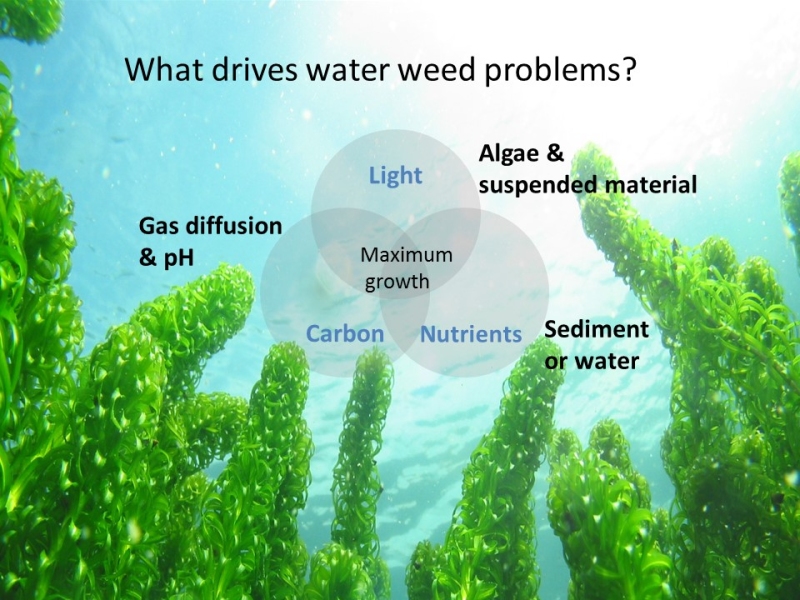Troublesome aquatic weeds have been an issue for the Rotorua Te Arawa Lakes for decades, but what do we really know about what drives water weed problems?
Assumptions about water weeds
Some common held beliefs about water weeds are 'one weed is as bad as another', 'waterfowl move water weeds around' and 'nutrient enrichment drives weed invasion'. However, these assumptions are incorrect or represent an oversimplified view of the problem. Exploring these popular misconceptions on water weeds will help us get a better understanding of weed problems, the role of humans and what we can do about it.
Consequences for weed management
Weed issues for the Rotorua Te Arawa Lakes involve just a few species of alien plant species that share characteristics including a high 'standing crop' (bulk biomass present at any one time), dense canopy at, or close to the water surface and the generation of numerous fragments that can accumulate onshore. These few species can be distinguished and ranked in terms of 'weediness' and impact. Recognition that some weeds are worse than others allows for more effective and proactive management of weed threats.
Water fowl are often implicated in spreading these most problematic water weeds, yet there is little real evidence that this is the case. Instead there is ample evidence that human activities are primarily responsible for the spread of problematic water weeds between lake catchments. This means that it is possible to intercept the weeds by targeting the pathways and vectors by which water weeds can enter lakes, through education, providing boat wash-down facilities, weed cordons and undertaking surveillance for new weeds.
Weed invasions are often thought to be associated with nutrient enrichment in New Zealand lakes. However, the most invasive water weeds and consequent problems are not limited to nutrient-rich lakes; they also occur in nutrient-poor lakes. Indeed, the most enriched lake systems have very little submerged vegetation. Although nutrients from sediment or water are important for weed growth, other essential conditions are also needed (Figure 1). Balanced supply of these conditions is unlikely where lake waters are highly enriched. Improving water quality alone does not necessarily lead to decreased weed problems, and there may even be increased weed development as lakes become less enriched. Consequently, it is important to manage weed problems by means other than nutrient management.
More information
Presentations from the Lake Water Quality Society Symposium will be made available on the LWQS website.


